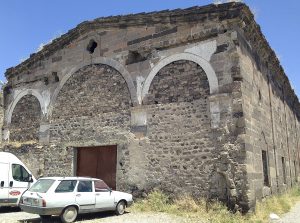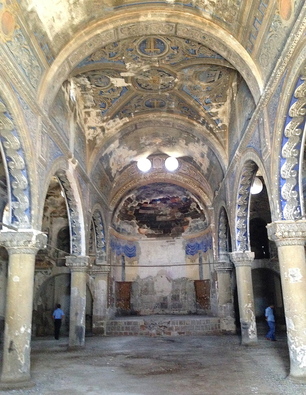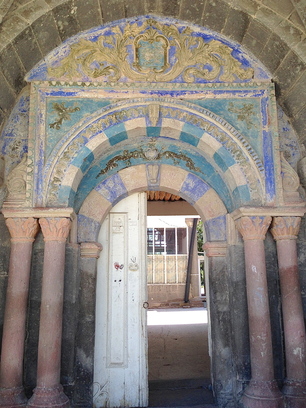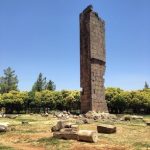Turkey’s pumpkin-seed capital Population: 24,000
 Old name: Dumarza
Old name: Dumarza
Market day: Wednesday
Southeast of Kayseri, the small town of Tomarza was once home to a large Armenian population. Its most conspicuous monument is therefore the large church of Surp Poghos-Petros, built in 1837 on the site of a much older and smaller church at the point in town where its four main quarters joined. Used as a warehouse until recently, the church is currently empty but locked. Ask around and someone may fetch the key so that you can go in and inspect the remains of the non-figurative frescoes that once covered the walls, ceiling and columns.
The building is no great beauty, having been built from the dark local stone and the original narthex having been knocked down and its arches blocked up. More lovely to look at is the striking stone Merkez Cami, built in 1906 in a style familiar from Kayseri that includes a stone-built dome. The circular portico in front of the main gate is especially pretty and provides protection from the weather to the colourful paintings over the door. It looks so like the entrance to the Monastery of Surp Astvatsatsin that it is probably safe to assume that the same man designed both structures.
The back streets near the Merkez Cami still contain some older houses built from the local stone, at least one with a fine carved gateway. If you keep walking you will probably emerge on a ridge made from huge slabs of stone now used for threshing corn. Beside it is a poplar-lined gully with some scant ruins at the bottom. They are the last remains of the once huge Monastery of Surp Astvatsatsin that dated back to at least the early 16th century and must have been demolished some time after 1915. The British traveller, Gertrude Bell, stayed in the monastery (reluctantly) in 1909 and took many photographs of the fine late 5th or early 6th-century Byzantine Church of the Panaghia which has been completely destroyed.
Backstory
How did it happen that Tomarza had such a large Armenian population? The answer lies in a property swap that took place in 1064 when the area around Tomarza was given to the last king of Kars by the Byzantines in return for their taking over in Kars.
In 1375 when the Armenian Kingdom of Cilicia collapsed thirteen families are said to have moved to Tomarza, dividing it into four separate quarters run by different families who worked together to govern the area right up until 1908. At that time Armenians completely outnumbered Turks here.
In 1915 the Armenians were driven out and although a few returned in 1919 they didn’t stay. There is a strong Tomarzan community now living in Racine in Wisconsin in the USA. Their story is told in Toros M. Madaghjian’s 2015 book, Memories of Tomarza.
Transport info
Minibuses to Tomarza depart from the Doğu Terminalı (Eastern Bus Terminal) in Kayseri. To get there take the tram line to İrdem 5, get off at Doğu Terminalı and follow the signs.


